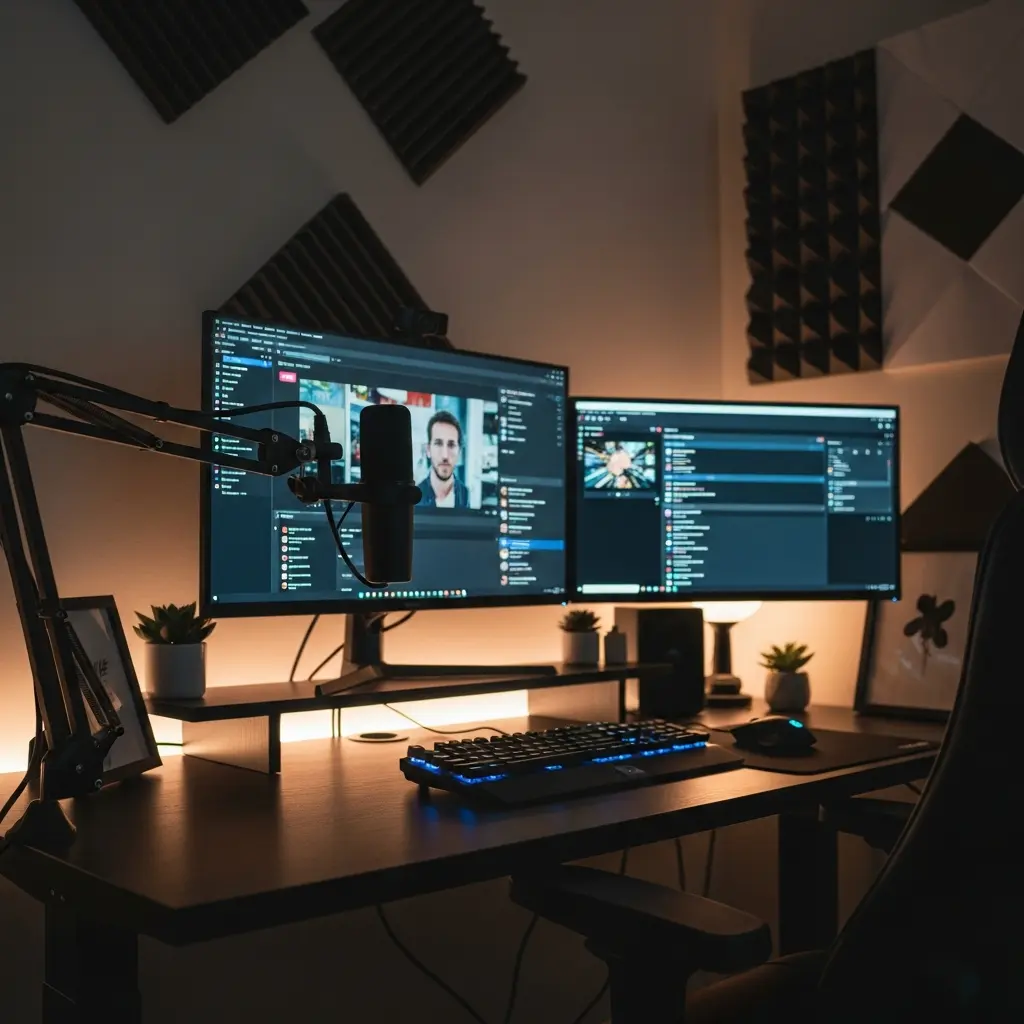
If you’ve ever tuned into a live stream and wondered why some creators sound crystal clear while others are plagued by echoes, pops, or background noise, you’re not alone. Audio can make or break your stream—viewers will forgive a pixelated webcam, but poor sound will send them packing. That’s why mastering microphone tips is non-negotiable for every streamer who wants to be taken seriously. Having streamed for years and helped dozens of creators upgrade their sound, I’ve distilled the five most essential secrets that will transform your audio—no tech degree required.
One of the most overlooked microphone tips is placement. Even a top-tier mic can disappoint if it’s in the wrong spot. The sweet spot is typically 6–12 inches from your mouth, angled slightly off-center. This positioning helps capture your voice clearly while minimizing plosives (those harsh “p” and “b” sounds) and breath noises. Experiment with your mic’s distance and angle while monitoring your audio through headphones—your ears are your best guide.
Don’t be afraid to use a boom arm or a quality desk stand. These tools help keep your mic steady and at the perfect height, which is especially crucial during long streaming sessions. A flexible arm also keeps your workspace tidy, letting you focus on creating rather than constantly adjusting your setup. If you’re designing your streaming corner, products like the Pastel Chill Desk Stream Pack can inspire a cozy, organized look that complements any mic setup.
Not all mics are created equal, and choosing the right one depends on your environment and vocal style. USB microphones are popular for their plug-and-play convenience, but XLR mics offer more control and typically better sound quality. If you’re in a noisy apartment, a dynamic microphone is your friend—it’s less sensitive to ambient noise compared to a condenser mic, which picks up every little sound (including that neighbor’s barking dog).
When in doubt, check out reputable guides like Shure’s Microphone Basics for in-depth info on mic types and their best uses. Remember, you don’t need to break the bank—a well-placed $60 dynamic mic can outperform a poorly used $300 condenser every time.
Technique matters just as much as gear. Speak directly at the mic, but don’t eat it—being too close can cause distortion and exaggerated bass (the dreaded proximity effect). If your mic is picking up breathing or mouth noises, try angling it slightly to the side of your mouth. This reduces unwanted sounds without sacrificing clarity.
Use a pop filter or foam windscreen to tame plosives and sibilance. These affordable accessories are the unsung heroes of professional audio. You’ll find that many top streamers, as highlighted in the Grow On Twitch Top 7 – Essential Tips for Streaming Success, credit their sound quality to simple, consistent mic technique rather than expensive upgrades.
Your room is part of your microphone setup. Hard surfaces like bare walls and glass can cause echoes, while carpets, curtains, and foam panels absorb unwanted reflections. You don’t need to turn your space into a recording studio, but a few strategically placed soft furnishings can drastically improve sound quality. Even hanging a thick blanket behind your desk can make a noticeable difference.
If you’re streaming at odd hours or in a shared space, communicate with roommates or family to minimize interruptions. Consistency in your environment yields consistent audio, which is crucial for building a professional presence. To further level up your stream’s vibe, consider integrating overlays and visual elements that match your audio quality—something you can explore in the Best Time to Stream on Twitch: Expert Tips for 2025 guide.
Even the best mic needs a little help from software. Streamers should get comfortable with basic audio filters: noise gate, compressor, and EQ. A noise gate cuts out background hum when you’re not speaking, while a compressor smooths out volume spikes for a more consistent sound. EQ can help shape your voice, removing muddiness or harshness depending on your mic and environment.
Always monitor your gain—the input level—so you’re loud and clear but not clipping (distorting). Most streaming software like OBS and Streamlabs includes visual meters to help you dial this in. Pro tip: record yourself and listen back, or stream privately to test your sound before going live. For more actionable advice, check out the Top 10 Microphone Tips – Easy Guide for Streamers for a deeper dive into setup and troubleshooting.
Don’t chase perfection—aim for consistency. Your viewers will appreciate a reliably clear voice over sporadic upgrades and constant changes. Document your settings, keep backups of your software profiles, and make small, incremental improvements. Streaming is about connecting with your audience, and your authentic voice is your most powerful tool.
Dynamic USB microphones like the Samson Q2U or Audio-Technica ATR2100x offer excellent sound for under $100, making them ideal for new streamers.
Use a dynamic mic, enable noise gate filters in your streaming software, and add soft furnishings to your room to absorb echoes.
If you’re using an XLR microphone, yes—an audio interface is required. For USB mics, it’s built in, so you can plug directly into your PC.
Position your mic 6–12 inches from your mouth, angled slightly off-center to reduce plosives and breathing sounds.
Start with a noise gate, compressor, and EQ. These filters will help clean up your audio and maintain a consistent volume level.
Combine good microphone technique, proper placement, sound treatment in your space, and basic audio filters in your software.
Great audio is the backbone of your streaming brand. By mastering these microphone tips, you’ll sound more professional, keep your viewers engaged, and stand out in a crowded field. If you’re serious about streaming, don’t overlook your setup’s aesthetics and comfort—explore the Pastel Chill Desk Stream Pack to create a space that inspires you to go live every day. Your community (and your ears) will thank you!
Receive an additional 30% discount for your first order by signing up through email!